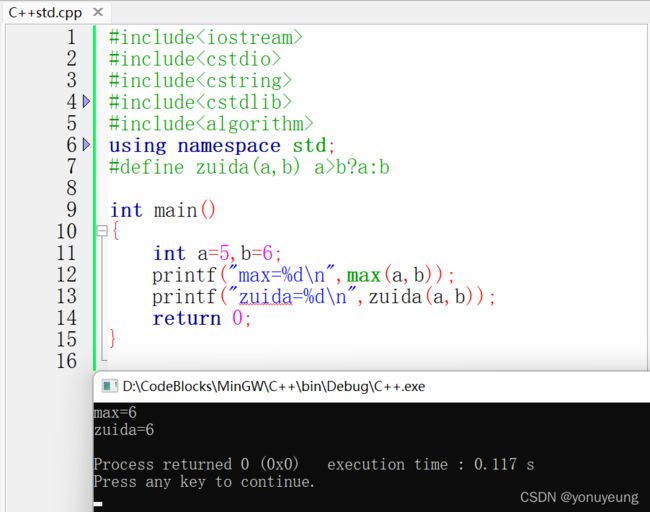上课笔记-指针(从百草园到三味书屋)
目录
求最大字符串
指针函数
函数指针
结构体指针
结构体中的指针
链表
求最大字符串
拓展:strcmp函数详解https://blog.csdn.net/MQ0522/article/details/111226036?ops_request_misc=%257B%2522request%255Fid%2522%253A%2522163952814216780264015667%2522%252C%2522scm%2522%253A%252220140713.130102334..%2522%257D&request_id=163952814216780264015667&biz_id=0&utm_medium=distribute.pc_search_result.none-task-blog-2~all~top_positive~default-3-111226036.pc_search_em_sort&utm_term=strcmp&spm=1018.2226.3001.4187![]() https://blog.csdn.net/MQ0522/article/details/111226036?ops_request_misc=%257B%2522request%255Fid%2522%253A%2522163952814216780264015667%2522%252C%2522scm%2522%253A%252220140713.130102334..%2522%257D&request_id=163952814216780264015667&biz_id=0&utm_medium=distribute.pc_search_result.none-task-blog-2~all~top_positive~default-3-111226036.pc_search_em_sort&utm_term=strcmp&spm=1018.2226.3001.4187
https://blog.csdn.net/MQ0522/article/details/111226036?ops_request_misc=%257B%2522request%255Fid%2522%253A%2522163952814216780264015667%2522%252C%2522scm%2522%253A%252220140713.130102334..%2522%257D&request_id=163952814216780264015667&biz_id=0&utm_medium=distribute.pc_search_result.none-task-blog-2~all~top_positive~default-3-111226036.pc_search_em_sort&utm_term=strcmp&spm=1018.2226.3001.4187
写法1
#include
#include
void fun(char s[][100],int n) //void fun(char (*s)[100],int n)
{
int x=0,i;
for(i=1;i0) x=i;
printf("%s\n",s[x]); //printf("%s\n",*(s+x));
}
int main()
{
char str[5][100];
int i;
for(i=0;i<5;i++)
gets(str[i]);
fun(str,5);
return 0;
}
写法2
#include
#include
void fun(char *s,int n)
{
int x=0,i;
for(i=1;i0) x=i;
printf("%s\n",s+x*100);
}
int main()
{
char str[5][100];
int i;
for(i=0;i<5;i++)
gets(str[i]);
fun(str[0],5);
return 0;
}
如果每个字符串的长度不固定呢?
#include
#include
void fun(char *ps[],int n) //数组的第一个长度可以省略掉
{
int i,x=0;
for(i=0;i<5;i++)
if(strcmp(ps[i],ps[x])>0) x=i;
puts(ps[x]);
}
int main()
{
char *str[]={"wwwwwwwwwwww","q","0","aaaa","5555556"};
fun(str,5);
return 0;
}
指针函数
拓展:puts()函数详解https://blog.csdn.net/zhanshen112/article/details/84075164?ops_request_misc=%257B%2522request%255Fid%2522%253A%2522163953025616780357228397%2522%252C%2522scm%2522%253A%252220140713.130102334..%2522%257D&request_id=163953025616780357228397&biz_id=0&utm_medium=distribute.pc_search_result.none-task-blog-2~all~top_positive~default-1-84075164.pc_search_em_sort&utm_term=puts&spm=1018.2226.3001.4187![]() https://blog.csdn.net/zhanshen112/article/details/84075164?ops_request_misc=%257B%2522request%255Fid%2522%253A%2522163953025616780357228397%2522%252C%2522scm%2522%253A%252220140713.130102334..%2522%257D&request_id=163953025616780357228397&biz_id=0&utm_medium=distribute.pc_search_result.none-task-blog-2~all~top_positive~default-1-84075164.pc_search_em_sort&utm_term=puts&spm=1018.2226.3001.4187
https://blog.csdn.net/zhanshen112/article/details/84075164?ops_request_misc=%257B%2522request%255Fid%2522%253A%2522163953025616780357228397%2522%252C%2522scm%2522%253A%252220140713.130102334..%2522%257D&request_id=163953025616780357228397&biz_id=0&utm_medium=distribute.pc_search_result.none-task-blog-2~all~top_positive~default-1-84075164.pc_search_em_sort&utm_term=puts&spm=1018.2226.3001.4187
返回值为指针的函数
#include
#include
char *fun(char *ps[],int n) //数组的第一个长度可以省略掉
{
int i,x=0;
for(i=0;i<5;i++)
if(strcmp(ps[i],ps[x])>0) x=i;
return ps[x];
}
int main()
{
char *str[]={"wwwwwwwwwwww","q","0","aaaa","5555556"};
char *ps;
ps=fun(str,5);
puts(ps);
return 0;
}
同样将第一个代码段改成
#include
#include
char *fun(char s[][100],int n)
{
int x=0,i;
for(i=1;i0) x=i;
return *(s+x);
}
int main()
{
char str[5][100];
int i;
for(i=0;i<5;i++)
gets(str[i]);
puts(fun(str,5));
return 0;
}
函数指针
可以这样用
#include
int Add(int a,int b)
{
return a+b;
}
int main()
{
int (*pf)(int,int);
int x;
pf=Add;
x=pf(3,5);
printf("%d",x);
return 0;
}
#include
int Max(int a,int b)
{
return a>b?a:b;
}
int Add(int a,int b)
{
return a+b;
}
int main()
{
int (*pf[2])(int,int);
int c,d;
pf[0]=Max;
c=pf[0](3,5);
pf[1]=Add;
d=pf[1](3,5);
printf("c=%d\nd=%d",c,d);
return 0;
}
结构体指针
写法1:
#include
struct Date
{
int yearl,month,day;
};
struct STU
{
int no;
char name[9];
double score[3];
struct Date birth;
};
int main()
{
struct STU a={101,"qqq",77,88,99,2002,12,7};
struct STU *p=&a;
printf("学号 %d\n",(*p).no);
printf("姓名 %s",(*p).name); //*p必须要加括号,因为成员运算符"."的等级最高
return 0;
}
用"->"写
#include
struct Date
{
int year,month,day;
};
struct STU
{
int no;
char name[9];
double score[3];
struct Date birth;
};
int main()
{
struct STU a={101,"qqq",77,88,99,2002,12,7};
struct STU *p=&a;
printf("学号 %d\n",p->no);
printf("姓名 %s\n",(*p).name); //*p必须要加括号,因为成员运算符"."的等级最高
printf("成绩 %lf\n",p->score[0]);
printf("生日 %d-%d-%d\n",p->birth.year,p->birth.month,p->birth.day);
return 0;
}
结构体中的指针
#include
struct STU
{
int *p;
};
int main()
{
int s[10]={1,2,3,4,5,6,7,8,9,10};
struct STU a={101,"qqq",77,88,99,2002,12,7};
int i; a.p=s;
// 输出数组s的每一个成员
for(i=0;i<10;i++)
printf("%4d",(a.p)[i]);
//printf("%4d",a.p[i]); "[]"和"."的运算等级一样高,所以也可以不加()
//printf("%4d",(a.p+i));
return 0;
}
可以用来写一个类似线性表的东西
#include
struct Date
{
int year,month,day;
};
struct STU
{
int no;
char name[9];
double score[3];
struct Date birth;
struct STU *next;
};
int main()
{
struct STU a={101,"qqq",77,88,99,2002,12,7};
struct STU b={102,"www",77,88,99,2002,12,7};
struct STU *p=&a;
a.next=&b;
printf("b 学号 %d\n",(a.next)->no);
//printf("b %d\n",p->next->no);
//printf("b 学号 %d\n",b.no);
return 0;
}
#include
typedef char ch;
typedef struct Student //把数据换个名字
{
int no;
struct Student *next;
}STU;
int main()
{
STU a={110},b={111},*p;
p=&a;
a.next=&b;
b.next=NULL;
printf("%d\n",p->no);
printf("%d\n",p->next->no);
return 0;
}
为什么不直接访问呢?因为在程序设计的过程中,有些数据是没有名字的,它只有地址,此时只能用这种方法来访问;
以动态分配为例:
#include
#include
#include
int main()
{
int *p,i;
p=(int*)malloc(100*sizeof(int)); //返回的地址没有任何类型。C语言中要说明地址是什么类型的,所以我们要强制转换
for(i=0;i<10;i++)
scanf("%d",p+i); //scanf("%d",&p[i]);
for(i=0;i<10;i++)
printf("%d ",*(p+i)); //printf("%d",*p[i]);
free(p); //输入首地址以回收
return 0;
}
链表
单向链表:
头插入法:最先进入链表的在最后(还有尾插入法)
#include
#include
#include
#include
using namespace std;
typedef struct student //类型定义,其实就是给他换个名字
{
int no;
char name[10];
struct student *next;
}STU;
int main()
{
int n,i;
STU *head,*p;
head = NULL;
scanf("%d",&n);
for(i=0;ino),p->name);
p -> next = head;
head = p;
}
p=head; //在这个地方其实可以删掉
while(p!=NULL)
{
printf("%10d %10s\n",p->no,p->name);
free(p);
p=p->next;
}
return 0;
}
双向链表:一个结构体存放两个地址
双向链表->树
宏:没有任何含义,就是原原本本地去替换
例如 #define Pi 3.14
易错点:
#define sqr(a) a*a
sqr(3+5) -> 3+5*3+5
#define sqr(a) (a)*(a)
sqr(3+5) -> (3+5)*(3+5)
常用:
#define max(a,b) a>b?a:b
文件:分为文本文件和二进制文件
存入13这个数字
文本:1:0011 0001 3:0011 0011
二进制:00001101
记住两个函数
freopen:文件重定向,文件重新打开,输入从文件里读,输出写到文件中去
freopen(文件名 文件 打开方式);
① 文件名 stdin,stdout 标准输入文件(默认为键盘)与标准输出文件(默认为显示器)
②示范:
#include
#include
#include
typedef struct Student
{
int no;
char name[10];
struct Student *next;
}STU;
int main()
{
freopen("c:\users\Desktop\编程学习\文件的测试数据(输入).txt","r",stdin);
freopen("c:\users\Desktop\编程学习\文件的测试结果(输出).txt","w",stdout);
int n,i;
STU *head,*p;
scanf("%d",&n);
head=NULL;
for(i=0;ino),p->name);
p->next=head;
head=p;
}
p=head;
while(p!=NULL)
{
printf("10%d 10%s\n",p->no,p->name);
p=p->next;
}
return 0;
}

